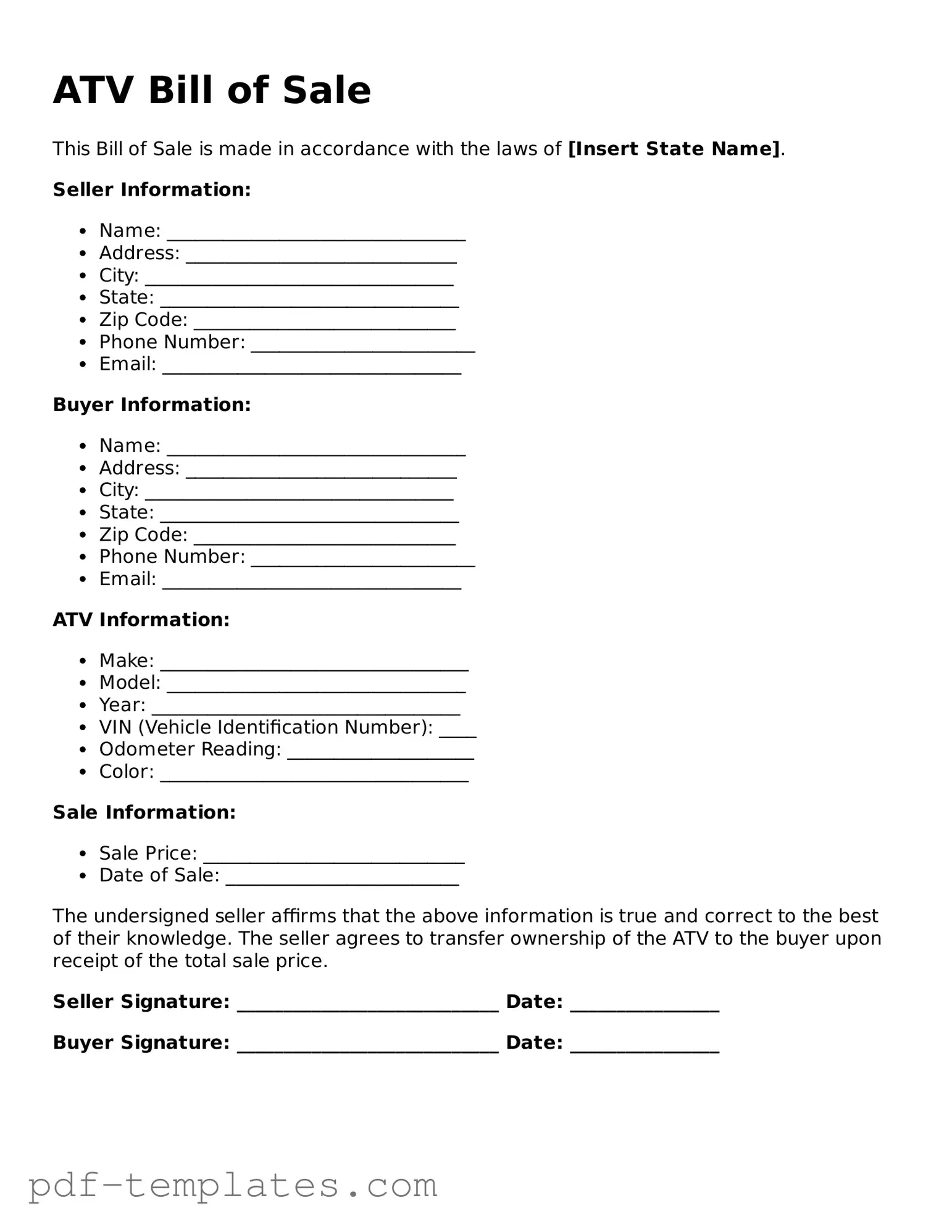The ATV Bill of Sale form shares similarities with a Vehicle Bill of Sale. Both documents serve as proof of transfer of ownership from one party to another. They typically include essential details such as the buyer's and seller's names, addresses, and the vehicle's identification number. This ensures that both parties have a clear record of the transaction, which can be helpful for future reference or legal purposes.
Another document akin to the ATV Bill of Sale is the Boat Bill of Sale. Just like the ATV Bill of Sale, this form is used to document the sale of a boat, outlining the terms of the transaction. It captures crucial information about the boat, such as its make, model, and hull identification number. This ensures that ownership is transferred smoothly and legally, protecting both the buyer and seller.
For individuals and businesses engaged in transactions involving vehicles, understanding the necessary documentation is crucial. The range of bills of sale serves to clarify ownership and sales terms, ensuring that both parties are protected and informed. In California, it is also essential to consider the tax implications of such transactions, which is where documents like the All California Forms come into play. These forms provide a foundation for legal compliance and aid in effective tax administration.
The Motorcycle Bill of Sale is also similar in function and purpose. This document records the sale of a motorcycle, detailing the buyer's and seller's information and the motorcycle's specifics, such as its VIN. This creates a clear record of the transaction, which can be vital for registration and insurance purposes, much like the ATV Bill of Sale.
A Car Bill of Sale is another comparable document. It serves the same purpose as the ATV Bill of Sale, providing a written record of the sale of a car. Essential details, including the vehicle’s identification number, the sale price, and the date of the transaction, are included. This documentation is crucial for both parties to ensure a smooth transfer of ownership and to avoid any potential disputes in the future.
Lastly, a Trailer Bill of Sale is similar in that it documents the sale of a trailer. This form includes the necessary details about the trailer, such as its make, model, and VIN. Like the ATV Bill of Sale, it serves to protect both the buyer and seller by providing a clear record of the transaction, ensuring that ownership is legally transferred and recognized.
